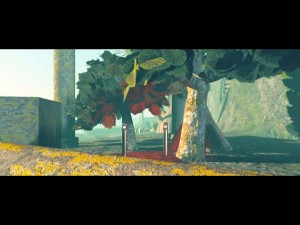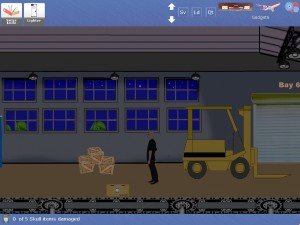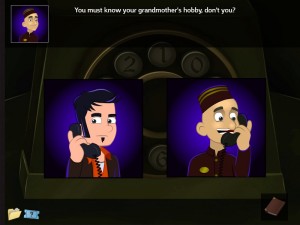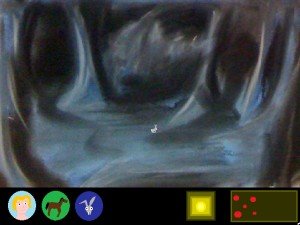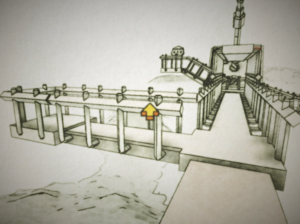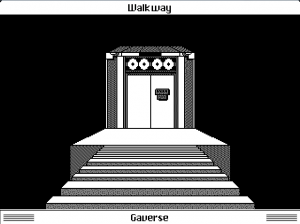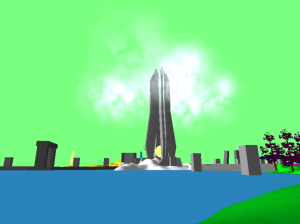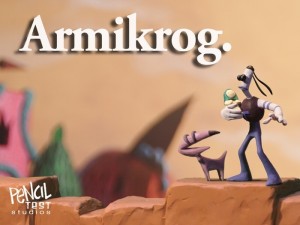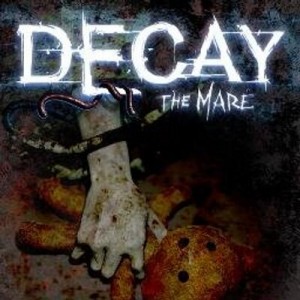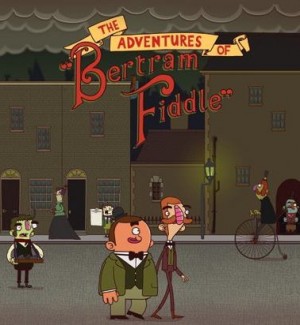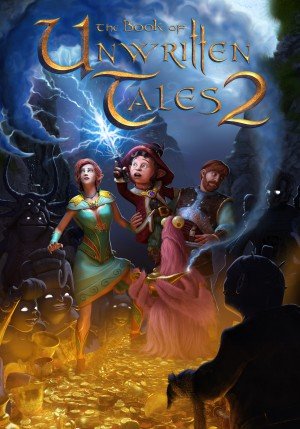Following Freeware - February 2016 releases
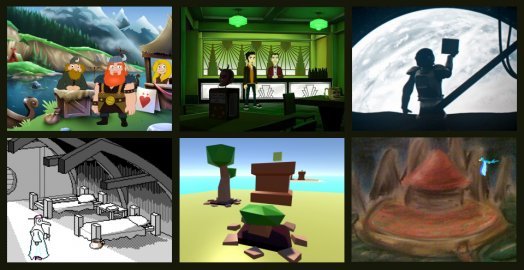
This month you can go back in time to play a false plague doctor under siege or a Viking in search of a tasty treat. You could also become a spy foiling an evil plot to take over the world, a young man inheriting the family ghost-hunting business, or a prince that loses something very important on a princess-rescuing mission. Finally, fans of the Myst series can enjoy the varied fruits of a game jam inspired by Cyan's classic adventure, as part of our coverage held over from last month. (Hey, there were 38 of them to get through!) All these await in our latest round-up of releases from the freeware scene.
Myha
When a Tongolian cosmonaut disappears in search of a remote Terran distress signal, now it’s your turn to blast into space to fulfill the mission. However, when you discover the source of the transmission, a mysterious black cube teleports both you and your spaceship to an island on an unknown planet. There is evidence of a small civilization here, but the area is almost completely deserted by the time you arrive. All alone, you must explore this strange land in an effort to rescue the missing cosmonaut and retrieve the cube, which you lost en route but now appears able to dangerously invade your thoughts.
 As part of January’s Myst Jam, French developer Simon Mesnard continued his “Black Cube” series (including ASA: Space Adventure and the upcoming Catyph: The Kunci Experiment) with a freeware spinoff adventure. A few artificial structures are scattered along the rocky coast of Myha (meaning “moon”), including a stone tower, a dome-roofed building protected by an energy shield, and several locked underground enclosures. There is very little in-game animation, but the story is framed by some impressive cinematic cutscenes. The 3D graphics are fairly realistic, but they’re not particularly crisp or optimized for widescreen displays, presented in a horizontal strip comprising only about half of the screen, the top and bottom consumed by large black borders. These uncharted environments are accompanied by a variety of gentle synthesized tonal tracks, ambient effects like birds chirping and water lapping the shores, and the occasional solid voice-over from a diary narration and your own A.I. system.
As part of January’s Myst Jam, French developer Simon Mesnard continued his “Black Cube” series (including ASA: Space Adventure and the upcoming Catyph: The Kunci Experiment) with a freeware spinoff adventure. A few artificial structures are scattered along the rocky coast of Myha (meaning “moon”), including a stone tower, a dome-roofed building protected by an energy shield, and several locked underground enclosures. There is very little in-game animation, but the story is framed by some impressive cinematic cutscenes. The 3D graphics are fairly realistic, but they’re not particularly crisp or optimized for widescreen displays, presented in a horizontal strip comprising only about half of the screen, the top and bottom consumed by large black borders. These uncharted environments are accompanied by a variety of gentle synthesized tonal tracks, ambient effects like birds chirping and water lapping the shores, and the occasional solid voice-over from a diary narration and your own A.I. system.
First-person navigation occurs through node-to-node movement via directional arrows, but each individual scene allows for smooth panning in 360 degrees around you. The cursor stays fixed in the centre of the screen and is a bit intrusive, but it smartly changes over hotspots to denote possible interactions. Apart from some light inventory use and a single machine to operate directly, the puzzles are exclusively passcode-based. But for those who have become spoiled (or rather, disillusioned) by the ease of such puzzles with conveniently handy and blatantly obvious solutions, Myha will make you work hard for your progress. Clues come in a range of forms – letters, symbols, colours, numbers – and a variety of different sources, and even after finding all the related clues you’ll need to seriously ponder their connections to proceed. A pen and paper will probably come in handy, though don’t neglect to read the in-game diary entries, accessed through the Tongolian laptops you encounter. The degree of difficulty should ensure anywhere between an hour’s worth of adventuring and forever-stuck-on-Myha.
Myha can be downloaded from the Myst Jam website. (Note: The game caused us a virus warning from Norton, but downloaded and installed smoothly on another PC with different virus protection.)
When the World Calls...
Agent 009 is called to headquarters in London, where he is told that a certain Mu Fanchu, head of the evil organization named Skull, is stealing a lot of red mercury. The man has to be stopped and his development laboratory destroyed because red mercury can be used to make atomic bombs. So 009 (James to his friends) has to travel around the world, destroy some objects that are important for Skull, oppose snipers, a tiger and a big laser, and escape multiple times. He's a busy man, 009.
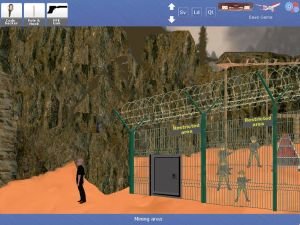 Slasher's new game When the World Calls... displays its superspy world in third-person view. James visits his boss in his London office, a gambling joint in Singapore, a factory in China and Skull's lab in the isolated Katamanu, Mongolia, amongst other locations. The graphics are crude and don't have much texture or detail, but this removes any need for pixel hunting as everything you need to interact with is quite noticeable. Animation is also rough; although 009 moves his legs in a sort of natural way while he walks, other people and the tiger don't. Gameplay is accompanied by loud music that you can turn down or switch off in the menu. The few sound effects, like explosions, gunshots, and the clicking of keys on a computer are convincing. There is no voice acting; everything uttered is shown as text above the head of the speaker.
Slasher's new game When the World Calls... displays its superspy world in third-person view. James visits his boss in his London office, a gambling joint in Singapore, a factory in China and Skull's lab in the isolated Katamanu, Mongolia, amongst other locations. The graphics are crude and don't have much texture or detail, but this removes any need for pixel hunting as everything you need to interact with is quite noticeable. Animation is also rough; although 009 moves his legs in a sort of natural way while he walks, other people and the tiger don't. Gameplay is accompanied by loud music that you can turn down or switch off in the menu. The few sound effects, like explosions, gunshots, and the clicking of keys on a computer are convincing. There is no voice acting; everything uttered is shown as text above the head of the speaker.
The game is played with the mouse: the right button cycles between verbs like grab, walk and look, and the left button interacts. The inventory is at the top of the screen, as well as a 'travel' button that seems to just be there for show because James refuses to leave no matter how often it's clicked. The puzzles are really simple and all rely on using the right inventory item. Of course it's not always obvious what you need, so you often have to look around a bit. Interaction is rewarded more by the tongue-in-cheek humor. This game is riddled with references to the James Bond movies, and 009 has an even more easy-going approach to most of the problems thrown at him than 007 has. He also just will not die. When he gets hit by a bullet or attacked by a tiger or (almost) killed in other ways, he just shrugs it off and says something like: "Ouch!" and allows you to try again. The game ends with a sort of cliffhanger, so we may see more of 009 in the future. Let's hope so.
When the World Calls... can be downloaded from the AGS website.
The Gatekeeper
Matthew enters his dead grandma's house and is surprised to find her there. He just came back from her funeral, after all. Grandma tells Matthew she needs him to “fill” her place. She leaves him no choice: he has to do it! Wondering what Grandma’s instructions mean, Matthew soon receives a phone call from the owner of a hotel. The hotel will be opened in a few days, but there is a nasty ghost running around, stealing things and generally being a nuisance. Matthew will need all his sleuthing skills and the help from a priest, the hotel's owner and the barman to eliminate the ghost.
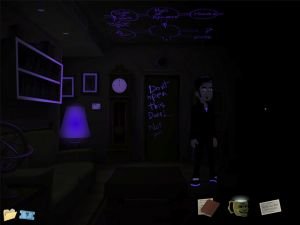 As we are used to from Carmel Games, The Gatekeeper is shown in third-person mode in colorful hand-drawn screens. The artists have opted for a more realistic style for this game; gone are the wacky lines and humorous looking characters. This is a serious game about ghost hunting! So for a change the hotel and its inhabitants look more or less realistic, which suits the game well. Unfortunately, most of the scenes are so dark it is easy to miss some vital items lying around. Turning your monitor brightness to a higher setting should help. Of course there is excellent sound work too. The voice acting is solid, the music a type of 'hotel jazz' that fits the setting well, and sound effects like a dripping water pipe, a car starting and switches clicking are very good.
As we are used to from Carmel Games, The Gatekeeper is shown in third-person mode in colorful hand-drawn screens. The artists have opted for a more realistic style for this game; gone are the wacky lines and humorous looking characters. This is a serious game about ghost hunting! So for a change the hotel and its inhabitants look more or less realistic, which suits the game well. Unfortunately, most of the scenes are so dark it is easy to miss some vital items lying around. Turning your monitor brightness to a higher setting should help. Of course there is excellent sound work too. The voice acting is solid, the music a type of 'hotel jazz' that fits the setting well, and sound effects like a dripping water pipe, a car starting and switches clicking are very good.
The Gatekeeper is played entirely using only one mouse button. The inventory, options folder and walkthrough icon are at the bottom of the screen. As with most Carmel games, the puzzles are all inventory-based and not very hard. There is also a single hidden object search to complete. But what makes this game stand out from many of the developer’s previous games is its story, which is a bit more complex than usual. An important part of it is even told to you in French. But don't worry, later in the game you will find out everything you need to know, so if you don't speak French you can still finish the game. There are rooms in the hotel and some places in Grandma's house you can't enter for now, but suggestions are made as you progress that access may be granted later. The adventure ends with a cliffhanger, so we will surely see more of Matthew the ghost hunter in the future.
The Gatekeeper can be played online at Newgrounds.
The Dark Plague
With plague sweeping across the land, disguising yourself as a doctor seemed like a good scam. Covering your face with the traditional mask, you thought you could make some money and be gone without anyone knowing your identity. But you misjudged the mood of the citizenry. They have lost patience with your false palliatives, and have gathered outside your door demanding a real cure. With only the meagre contents of your house to work with, your chances of surviving this angry mob look slim.
 Set in an unnamed town in medieval Europe, Gurok’s The Dark Plague provides a short but disturbing experience. The graphics have limited detail, consisting of black and white line drawings with only occasional splashes of colour. The main character wears the long-nosed mask and wide-brimmed hat worn by plague doctors of the time, and is very basically animated. The handful of rooms in the house start off looking normal, but later change depending on whether you take a holy path or one more related to the mystic arts. The background music consists of a series of slow sonorous tones, lending gravitas to the proceedings. This is augmented by some sound effects, including the heavy footsteps of the protagonist and the crackling of a fire.
Set in an unnamed town in medieval Europe, Gurok’s The Dark Plague provides a short but disturbing experience. The graphics have limited detail, consisting of black and white line drawings with only occasional splashes of colour. The main character wears the long-nosed mask and wide-brimmed hat worn by plague doctors of the time, and is very basically animated. The handful of rooms in the house start off looking normal, but later change depending on whether you take a holy path or one more related to the mystic arts. The background music consists of a series of slow sonorous tones, lending gravitas to the proceedings. This is augmented by some sound effects, including the heavy footsteps of the protagonist and the crackling of a fire.
Whilst there is only a limited area to explore, you will need to do so thoroughly. Right-click examines hotspots, whilst left-click moves the character and interacts. For many hotspots, you will need to move the character close to be able to interact. Moving the cursor to the top of the screen calls up the inventory. This also includes two flasks, marked fever and fervor. These fill and empty depending on your actions, the rooms changing appearance when either tends towards full. Appropriate inventory use, mainly guided by tomes found in your explorations, is the order of the day. More than one ending is possible, with the game warning you when you are about to take an action that will end the game. Given the subject matter, it is not overly surprising that the tone is dark without any ending being really happy.
The Dark Plague can be downloaded from the AGS database.
Piece of Princess Cake
All the Viking warrior Sandro wants is a piece of delicious princess cake. Unfortunately the only person with the recipe is Andreas, and he won’t sell to Sandro. Whilst neither man knows the original cause, their two clans have been at war for generations. As a result, Andreas has sworn an oath never to sell princess cake to any member of Sandro’s family. But Sandro’s isn’t the only family that Andreas’s family have a feud with. The owner of the Vikea superstore also considers him an arch-enemy and Andreas really wants a new giant stone for his living room. Perhaps a swap can be arranged.
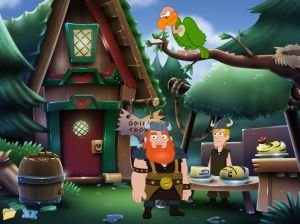 Piece of Princess Cake, from Carmel Games, is unlikely to win any prizes for historical accuracy. The graphics are done in the same bright cartoon style of so many the studio’s other games (though very unlike the darkness-enshrouded The Gatekeeper), with limited but decent animation. The main character is a hulking brute with a bushy beard, though his threatening size is offset by his permanent gentle smile. The action takes place around the village, including a small pub and the Vikea store, decked out with stone menhirs and other items for sale. The game is fully voiced to a decent standard, with some over-the-top Viking accents. Musical backing is a simple pipe and drum tune that fits the setting well. There are also a variety of sound effects, including the sounding of a horn and the sloshing of liquid.
Piece of Princess Cake, from Carmel Games, is unlikely to win any prizes for historical accuracy. The graphics are done in the same bright cartoon style of so many the studio’s other games (though very unlike the darkness-enshrouded The Gatekeeper), with limited but decent animation. The main character is a hulking brute with a bushy beard, though his threatening size is offset by his permanent gentle smile. The action takes place around the village, including a small pub and the Vikea store, decked out with stone menhirs and other items for sale. The game is fully voiced to a decent standard, with some over-the-top Viking accents. Musical backing is a simple pipe and drum tune that fits the setting well. There are also a variety of sound effects, including the sounding of a horn and the sloshing of liquid.
Control is handled through a single mouse button, with the cursor changing when hovered over a hotspot. The owner of Vikea is well aware who you are shopping for, so a direct approach is not possible. Instead you will find have to search around the village for a way to mellow her mood. You must help a local drunk with a bad taste in his mouth the morning after, and cheer up a distressed boat owner. Whilst there are no dialogue choices, conversations with everyone in the village will steer you in the right direction. Most puzzles are solved using inventory, many in combination. You will also need to piece together a torn treasure map to unlock its secrets. As befits a brave warrior questing for cake, the whole game has a light and gentle tone.
Piece of Princess Cake can be played online at SnapBreak.
Prince Dickless
Prince Timothy is taking his girlfriend Princess Gwen for a ride when they are ambushed by a witch, who cackles: "Hahahaa, the perfect virgin for my new spell!" She destroys the cart, almost kills the horse and disappears with Gwen, leaving Timothy behind in despair. Fortunately the horse, who is mortally wounded, turns out to be a Changer, a creature who can adopt the shapes of the animals he kills. He transfers his powers to Timothy, who then has to kill the Changer so Timothy can become a horse and gallop after the witch to get Gwen back. Thus begins a strange tale so laden with (references to) sex and genitals and still more sex that it's definitely not for children and may even be offensive to some adults.
 Prince Dickless is JNGames' second title, and it looks like the indie developer is boldly building a reputation for risqué content. Their last game, Femspray, 'only' contained "lots of nudity, some sexual bits and loads of gender swapping," while Prince Dickless comes with the warning of "Sex, Bestiality, Animal transformations, Clichés, Nudity, Castration, Penectomy, Lesbian witches, Playboy bunnies, real bunnies, Mock-erotica, gender-bending and lots more puns." For those who already know they won’t like such things, you can't say you weren't warned!
Prince Dickless is JNGames' second title, and it looks like the indie developer is boldly building a reputation for risqué content. Their last game, Femspray, 'only' contained "lots of nudity, some sexual bits and loads of gender swapping," while Prince Dickless comes with the warning of "Sex, Bestiality, Animal transformations, Clichés, Nudity, Castration, Penectomy, Lesbian witches, Playboy bunnies, real bunnies, Mock-erotica, gender-bending and lots more puns." For those who already know they won’t like such things, you can't say you weren't warned!
The graphics feature beautifully painted watercolour backgrounds and simply drawn characters. Animation is quite good; although in human form Timothy slides over the floor somewhat while walking, his movements in all animal forms are rather realistic. Apart from a fire in a hearth and some witches flying around, there is no ambient animation. The game also doesn't have voice acting, with all spoken text shown on the screen above the head of the person speaking. A very simple cello tune accompanies the gameplay. Effects you’ll hear include the crackling of fires, the working of spells, and even the sounds of sex. All of these noises are well done and fit the game perfectly.
The interface is standard for AGS games, as left-clicking interacts and right-clicking cycles between walk, look, talk and grab. The inventory and menu button appear at the bottom of the screen. The puzzles are logical and fit the game nicely, making use of the fact that different animals have different abilities. Timothy has to lure two creatures out of their burrows, escape from a room where he is held as a pet, fight some witches and eventually save Gwen. Much of the time he prances around naked and sex is merely referred to in the things he does or says or thinks, but the farther you progress the more the content becomes explicit and extreme until at the very end it gets really gross. Luckily the story has some nice twists along the way, and you will find some humorous remarks scattered throughout. Some of the choices you make during the game influence its outcome, as Prince Dickless has no less than 12 endings, 4 good and 8 bad. Finding them all means you have to replay the game a few times.
Prince Dickless can be downloaded from the AGS website.
Myst Jam
Since Cyan’s seminal adventure came out in 1993, the Myst series has inspired strong feelings in the adventure gaming community. The franchise has undoubtedly proved influential over the years, inspiring both homages like RoonSehv and parodies like Pyst. The recent Myst Jam showed that, even over 20 years after the first instalment, Myst still holds great fascination for many developers. The only requirement was to create a game “inspired by Myst", and some entries eschew the traditional form, such as a tower defense challenge and one where you control a falling character to avoid collecting too many red and blue pages. Others offer only visual tours without puzzle elements. The complete list of downloadable entries, many available on multiple platforms, can be found at the Myst Jam website. Along with Myha, other highlights were as follows:
Canveus
A world book has been robbed of nearly all its colour. Now you must venture inside and operate a vast machine to bring that colour back. The artwork of DragonXVI’s Canveus is depicted in detailed pencil sketches. The contraption you must repair appears as a series of walkways, apparently suspended in thin air. Features such as mountains and hills break through the mist surrounding you, indicating land below. Whilst movement is node-based, there is full freedom of view in all directions, allowing you to examine your environment thoroughly. The machinery is initially still but becomes fluidly animated as you repair different sections. In keeping with the premise, there is also very little colour at the start, with more being added as you progress. The main sound backing your quest is the wind blowing through this remote location. Each area has its own ambient effects, including the sound of running water, and operating machinery can produce simple mechanical clicks, ring like a struck bell or even play a little tune. Where sounds are played continuously, the volume changes according to their proximity. The most satisfying sound of all is a triumphant fanfare played when a puzzle is solved.
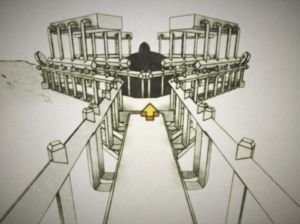 Interaction is performed entirely through left mouse clicks. The cursor appears as a black circle normally, changing to a hand when you can interact and an arrow when you can move in a particular direction. The game is split into seven mechanical islands, six of them with their own self-contained puzzle to solve. Whilst each can be solved alone, other islands often contain clues to aid you. These range from a maze with switches that change its layout, a laser redirection challenge, and a puzzle to arrange four musical blocks. Completing all the islands opens up the path to a final puzzle that fully recolours the landscape. Whilst usually easy to understand, the puzzles are by no means simple to solve, providing a satisfying challenge to fans of the original Myst.
Interaction is performed entirely through left mouse clicks. The cursor appears as a black circle normally, changing to a hand when you can interact and an arrow when you can move in a particular direction. The game is split into seven mechanical islands, six of them with their own self-contained puzzle to solve. Whilst each can be solved alone, other islands often contain clues to aid you. These range from a maze with switches that change its layout, a laser redirection challenge, and a puzzle to arrange four musical blocks. Completing all the islands opens up the path to a final puzzle that fully recolours the landscape. Whilst usually easy to understand, the puzzles are by no means simple to solve, providing a satisfying challenge to fans of the original Myst.
Wince Nail
Gaverse had grown tired of working at Corporeal Industries, and had not been shy in talking about it. Perhaps he should have been more circumspect, because the “vacation” his company subsequently offered him turned out to be a one-way trip to a surreal pocket dimension. The graphics in CYBEReris’ Wince Nail feature a monochrome look that will be familiar to players of early illustrated text adventures. Environments are presented in a simple but effective style, including a series of steps hanging in nothingness and a lift shaft missing its lift. There is no animation, with location changes handled in a simple slideshow format. An ambient synth-heavy sci-fi tune adds to the retro feel of the game, as do the 8-bit bleeps and clicks of the sound effects.
 All control is performed through a single left-click. When pointing at a hotspot, the location name changes to that of highlighted object. Where there is an exit in a particular direction, pointing at the edge of the picture will reveal the hotspot to use it. For most other hotspot interactions, a verb list appears allowing you to examine the item, use it on its own, or use the current item with it. You will also occasionally come across switches and buttons that operate when clicked. Moving the cursor to the bottom of the screen calls up a menu that lets you change settings and interact with the currently held object. Message boxes appear for most interactions, the text delivered with a dry humour. The puzzles are relatively simple, though you will still need to pay close attention to your surroundings to solve them. The ending implies a bigger game may be planned at a later date.
All control is performed through a single left-click. When pointing at a hotspot, the location name changes to that of highlighted object. Where there is an exit in a particular direction, pointing at the edge of the picture will reveal the hotspot to use it. For most other hotspot interactions, a verb list appears allowing you to examine the item, use it on its own, or use the current item with it. You will also occasionally come across switches and buttons that operate when clicked. Moving the cursor to the bottom of the screen calls up a menu that lets you change settings and interact with the currently held object. Message boxes appear for most interactions, the text delivered with a dry humour. The puzzles are relatively simple, though you will still need to pay close attention to your surroundings to solve them. The ending implies a bigger game may be planned at a later date.
Seasonseed
Four islands laid out in a square stand together in an otherwise featureless sea. Each represents a season. Whilst the waters around the islands are easily fordable, you must restore the four bridges that once united them. Seasonseed, by Lucas Molina, uses simple 3D modelling to present its four flat islands. Each has its own suitable colour, with the green of spring giving way to the brown of fall. Each also has a handful of other basic features, in the form of trees and pedestals of varying height. The appearance of the former is controlled by the player, and represents the key to gameplay. As well as a unique colour palette, each island has its own orchestral theme music. The light dancing music of summer is in stark contrast to the echoing sombre music of winter.
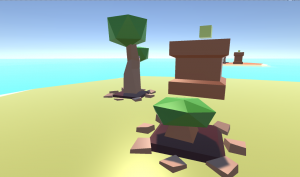 Either WASD or the cursor keys are used for free movement, with the mouse used to look around. Pressing the space bar executes a small jump. To restore the bridges, you must collect a cube on each island, though all but one of these is inaccessible at first. Fortunately, on each of the four islands are seed beds that are varied in position and all initially empty. Approaching a seed bed allows you to plant a seed by pressing E. This results in a tree appearing on each of the other three islands. The next season has a sapling, the one after that a full-grown tree and the last a fallen trunk. To complete the game you must vary the positions of your seeds to make it possible to reach all of the other cubes. Whilst simple in concept, this proves a satisfying challenge to resolve.
Either WASD or the cursor keys are used for free movement, with the mouse used to look around. Pressing the space bar executes a small jump. To restore the bridges, you must collect a cube on each island, though all but one of these is inaccessible at first. Fortunately, on each of the four islands are seed beds that are varied in position and all initially empty. Approaching a seed bed allows you to plant a seed by pressing E. This results in a tree appearing on each of the other three islands. The next season has a sapling, the one after that a full-grown tree and the last a fallen trunk. To complete the game you must vary the positions of your seeds to make it possible to reach all of the other cubes. Whilst simple in concept, this proves a satisfying challenge to resolve.
Artifact
In the centre of a small archipelago, a towering artifact soars into the sky. Only by activating the four smaller artifacts on the surrounding islands will you discover its true purpose. Dan McGrath’s Artifact adopts full 3D modelling to present undulating landscapes, each island bearing a smattering of trees. Other features appear less frequently, including a number of humanoid statues and a single tall lighthouse. Vibrant colours are used throughout: the sky is a brilliant green and each of the four individual islands has its own dominant colour. Use of shadow, from a light source above the main tower, gives real definition to the environment. There is limited animation for some machinery in operation and for the gentle snowfall throughout. The game is played out entirely in silence.
 Either WASD or the cursor keys are required for movement, with the mouse used to look around. When you are close enough to an object or device, an on-screen prompt appears with left-click interacting. As landscape features often obscure your view, diligent exploration is key. On each island there is a beacon to activate that feeds into the main device. The islands contain all the items you need for their respective beacons, though a couple require objects from other locations to provide initial access. All machinery operates automatically when the correct items are inserted, with puzzles restricted to locating the right ones.
Either WASD or the cursor keys are required for movement, with the mouse used to look around. When you are close enough to an object or device, an on-screen prompt appears with left-click interacting. As landscape features often obscure your view, diligent exploration is key. On each island there is a beacon to activate that feeds into the main device. The islands contain all the items you need for their respective beacons, though a couple require objects from other locations to provide initial access. All machinery operates automatically when the correct items are inserted, with puzzles restricted to locating the right ones.
Other new releases
Not all games are created equal, and freeware games especially come in all shapes and sizes. Not to be overlooked, the following list might also be of interest, though these games may be significantly shorter or less polished, more experimental titles than those detailed above, some perhaps only borderline adventures to begin with.
Boogie Bum’s Roger Quest by jwalt – In Reality-on-the-Norm, Roger has gone missing and The Bum must seek him out, if he can take time out from dancing.
Love is on the Bus by Jonnil – Bring happiness to others and to yourself by making people meet.
The Hunt by Running Zombie – Find your way through the forest and kill the evil Elk King.
That’s it for this month. Think we’ve missed a gem or want to tell us about your own game? Then pop in to our Adventure forum and tell us about it!
Article written by Jack Allin, Stephen Brown, and Willem Tjerkstra.




